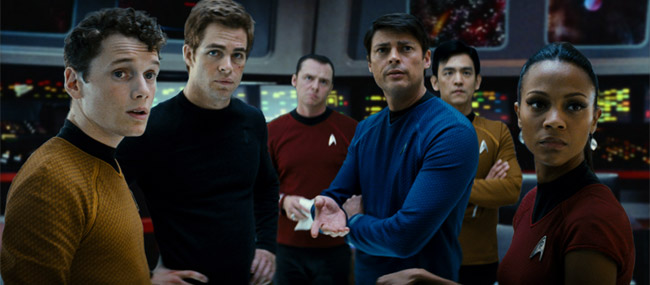Re: TOS continues...
I don't think understanding the appeal of
Star Trek--or of fan productions
based on
Star Trek--is rocket science.
Star Trek is made up of a nearly infinite number of elements, with different viewers assigning nearly infinite different levels of importance to each of those elements.
The style of plotting, dialogue, characterizations, directing, cinematography, lighting, coloring, editing, art design, sets, set decorations, casting, acting, theme song, additional music, visual effects, special effects, sound effects, props, costuming, make-up, hairstyles, stunt work, the occasional singing and dancing, and even the style of font--all make
Star Trek uniquely
Star Trek. These elements were combined in some "secret formula" nearly fifty years ago, and have helped it achive the longevity it has experienced so far. The design aesthetic has changed over the years, of course--mostly necessitated by the needs associated with making things larger than life up on a big screen, instead of smaller than life on a small television picture tube. Even after "newer" "updated" design aesthetics of a series of
Trek motion pictures, a return of the franchise to television in 1987 looks more like the original series than the movies probably do.
I think the intent of these
Star Trek fan productions (well, of my production at any rate), is to "optimize" all those elements as much as possible to tell new adventures--on a small screen, of course. For some, trying to tell a new story with not-the-original actors is just crazy talk. For some, there's no problem with accepting new actors in familiar roles--but if you put them on a bridge that looks like an Apple store, that's just too unpalatable. For some, a sequel to an original
Star Trek episode told with a 2009 art design aesthetic would be really cool. For others, that would be like putting bright yellow musard in a tall ketchup bottle: it would just look weird. But, for them, you could do it the other way: put the new actors on an "old" set design. For some, they really want to see tribbles again, or the gorn again, or Spock going into
pon farr again; for others, they
don't want the comfortably familar and they want something totally new. For some, they want to see how the world of
Star Trek that we viewed through a 1966 lens actually transitioned to the world of animated
Star Trek, to the movies, and to a new generation; others think that connecting all those dots is all just fan-wankery.
Importantly, I think the idea that an adherence to a 1966-1969 production aesthetic somehow actually
prevents a production from acheiving any kind of quality storytelling is a false dichotomy. The
Star Trek Phase II (formerly
New Voyages) episode "World Enough and Time" was nominated for both a science fiction Hugo Award and a science fiction Nebula Award, losing out to the
Doctor Who episode "Blink" and the motion picture
Pan's Labyrinth, respecitvely. We were honored to have lost to those fine productions.
People like watching these things for different reasons; other people really hate watching these things for different reasons. But I don't think anyone is omnicient enough to know which elements are the truly fundamental elements of
Star Trek and which ones are the ones that can be dispensed with. So for now I'll just work on producing the combination of elements that I think is "optimal," given the limited resources.
Of course,
Star Trek fan productions didn't invent the idea of doing pastiches; we're just doing it using a medium that hadn't really been employed much before. But pastiches are admittedly not for everyone--no matter what the medium.
And all of this "what's the attraction of
Star Trek fan films?" is something that's been discussed for nearly ten years now; the subject isn't really a new one all of a sudden.


